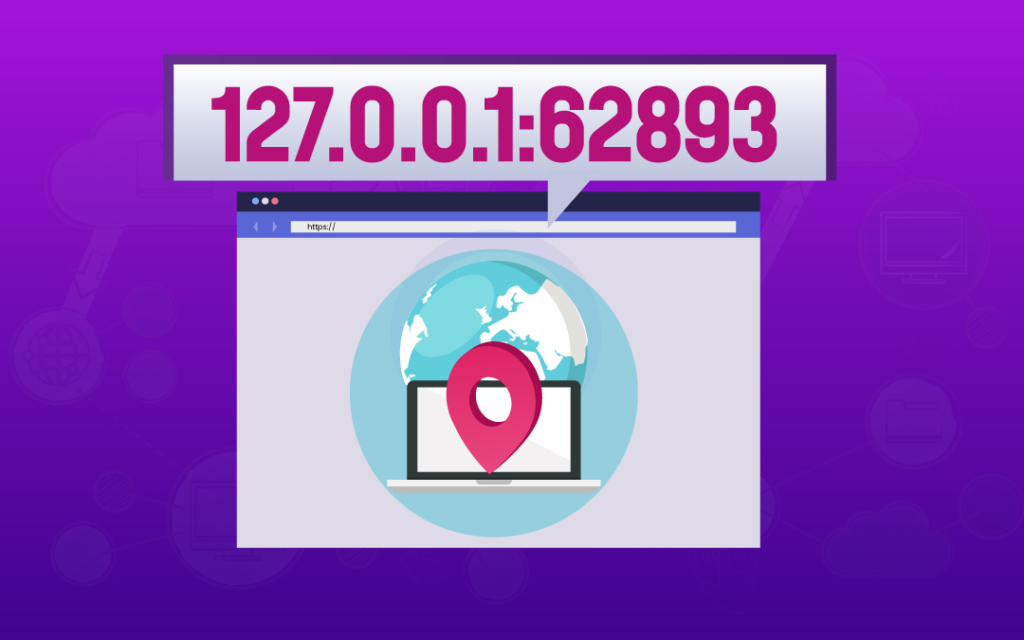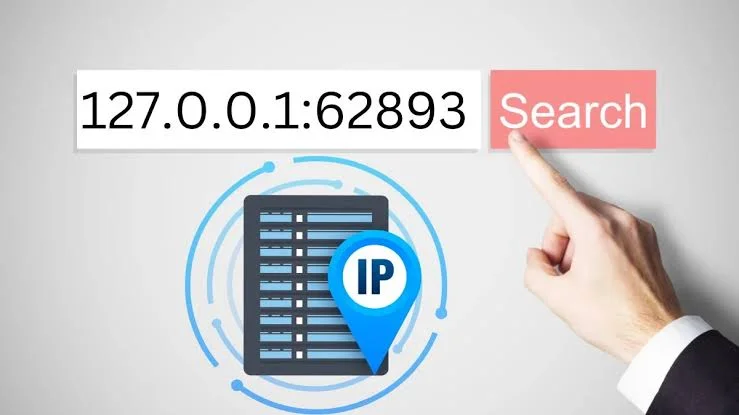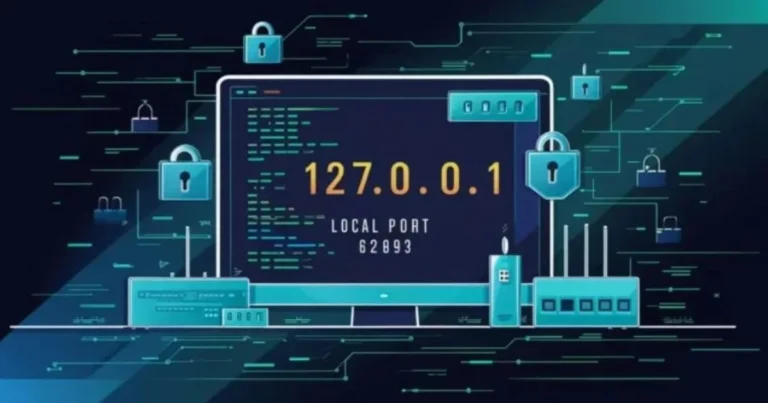In the realm of networking and web development, certain terms and numbers often surface repeatedly. Among them, 127.0.0.1 holds a unique place as it represents the localhost, or the loopback IP address. But what does the number 62893 signify when used in conjunction with 127.0.0.1? In this blog post, we’ll dive deep into the significance of 127.0.0.1:62893, explore what 127.0.0.1 means, and examine how this IP address operates in the broader context of networking.
What is 127.0.0.1?

The Loopback Address Explained
127.0.0.1 is the standard IP address assigned to the loopback interface in IPv4 networking. This means that any data sent to this address will be routed back to the local machine. It serves multiple purposes:
Communication: It allows applications running on the same device to communicate with each other.
Testing: Developers use this address to test applications locally without requiring an internet connection.
Technical Overview of 127.0.0.1
- Part of the 127.0.0.0/8 Range: The entire range from 127.0.0.1 to 127.255.255.254 is reserved for loopback purposes. Although all addresses in this range serve the same function, 127.0.0.1 is the most commonly used.
- IPv4 Standards: As per the Internet Engineering Task Force (IETF), the loopback address is specified in RFC 1122.
What Does the Port Number 62893 Represent?
When you see 127.0.0.1:62893, the number following the colon represents a port number. Port numbers are used in conjunction with IP addresses to identify specific processes or services running on a device. Here’s a breakdown:
Understanding Port Numbers
In networking, a port number is a numerical identifier for specific processes or services running on a device. When you see 127.0.0.1:62893, the 62893 is a port number. Here’s what you need to know:
- Port Range: Port numbers range from 0 to 65535, with certain ranges designated for specific purposes:
- Well-Known Ports (0-1023): Reserved for standard services (e.g., HTTP on port 80, HTTPS on port 443).
- Registered Ports (1024-49151): Used by software applications.
- Dynamic/Private Ports (49152-65535): Typically assigned dynamically for private or temporary connections.
Significance of 62893
The specific port 62893 could be any application or service running on your machine, assigned dynamically or chosen by a developer. For instance, if you are running a development server or a database, it might be configured to listen on that port. Accessing 127.0.0.1:62893 in a web browser could lead you to a web interface for an application hosted on your local machine.
Use Cases for 127.0.0.1:62893
1. Web Development and Testing
In web development, it’s common to run servers locally for testing purposes. By accessing 127.0.0.1:62893, developers can:
- Test Features: Make sure web applications function as intended before deploying to a production environment.
- Debug Code: Easily troubleshoot issues without impacting live users.
2. Database Access
Many databases allow local connections through the loopback address. For instance, if a database server (like MySQL or PostgreSQL) is configured to run on port 62893, you can manage it directly through this address.
3. API Development
When developing APIs, you can host a local server and access it via 127.0.0.1:62893. This is crucial for:
- Sending Requests: Use tools like Postman or cURL to test API endpoints without needing an external server.
- Simulating Client-Server Interactions: Verify how different components of an application interact in a controlled environment.
4. Remote Connections and Proxies
Some applications use 127.0.0.1:62893 to listen for remote connections, even though they operate locally. This setup is useful for:
- Local Proxies: Applications that require routing through a local proxy for testing.
- Cross-Platform Testing: Ensuring that applications behave consistently across different environments.
Security Implications of Using 127.0.0.1:62893
The Security Benefits of Loopback Connections
Using the loopback address generally enhances security since it isolates applications from external networks. However, it’s still essential to consider potential vulnerabilities:
- Firewall Configurations: Ensure your firewall permits traffic on necessary ports while blocking unauthorized access.
- Secure Services: Implement strong authentication methods for services accessible via localhost.
Common Security Practices
- Regular Updates: Keep all software up to date to protect against known vulnerabilities.
- Monitoring: Use tools to monitor local network traffic for unusual activity.
Common Issues and Troubleshooting
Connecting to 127.0.0.1:62893
Sometimes, you may encounter issues while trying to access 127.0.0.1:62893. Here are common problems and their solutions:
- Service Not Running: Ensure that the service you are trying to access is actually running on that port. You can check this using command line tools like
netstatorlsof. - Port Conflicts: If another application is using the same port, you might face issues. Try changing the port number in your application settings.
- Firewall Rules: Check your firewall settings to ensure that local connections are permitted.
- Browser Issues: Sometimes, browser extensions or settings may interfere. Try accessing the address in incognito mode or with a different browser.
Conclusion
In summary, 127.0.0.1:62893 is a powerful tool in a developer’s arsenal, symbolizing the potential of localhost for testing and development. Understanding the components of this address—127.0.0.1 as the loopback IP and 62893 as the port—allows for a deeper appreciation of how local networking operates.
As you delve into web development or network programming, familiarizing yourself with the significance of localhost and the various ports available can enhance your workflow. Whether you’re troubleshooting a service, running a database, or testing a web application, using 127.0.0.1:62893 can be a gateway to efficient local development.
By grasping these concepts, you’re not just learning about an IP address and a port; you’re stepping into a broader world of networking that empowers you to create, innovate, and troubleshoot effectively in a digital landscape.












